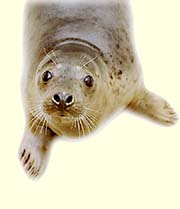|
||
|
Way Downstream
From Annapolis, winds of change — blowing cleaner with less pollution — will soon move through Maryland, now that the Healthy Air Act swept through the General Assembly and past Gov. Robert Ehrlich. Behind closed office doors, he signed with no fanfare a law curbing nitrogen, sulfur, mercury and carbon dioxide pollution from Maryland’s seven dirtiest coal-fired power plants. Maryland now joins seven other East Coast states in the Regional Greenhouse Gas Initiative to control carbon dioxide. Regulating the pollutants has taken years, but Maryland now has the strongest air pollution law in the country, according to the Maryland League of Conservation Voters. Around Maryland, look for more green spaces, now that Gov. Robert Ehrlich and the Maryland legislature have fully funded Program Open Space, begun in 1969, for the first time in four years. Since 2002, over $400 million from the fund has been diverted to general budget expenses. Now in fiscal year 2007, the $361 million Program Open Space and the other land conservation programs can do their job: use money from the real estate transfer tax — a one-half-percent tax on the sale of property in Maryland — to build parks, protect land around water sources and to preserve forests, family farms and wildlife habitat. Funding includes $16,146,827 for Anne Arundel County and $1,619,537 for Calvert County. In Elkton, a 464-point silver maple replaces the beloved, fallen Wye Oak as Maryland’s largest tree. The Cecil County giant puts down roots in Eder Park, from which it reaches up 114 feet. It’s the second biggest silver maple in the U.S., trailing a 477-point gargantuan in Michigan. Maryland has some 1,700 registered Big Trees, including two of the top 10, which break 400 points, in Anne Arundel County: www.dnr.maryland.gov/forests/trees/bigtree.html. Across the Potomac watershed, waters run freer now that more than 131 tons of trash have been removed. At the 18th Annual Potomac Watershed Cleanup, some 3,454 volunteers worked for three hours for at some 300 clean-up sites in Virginia, District of Columbia, Maryland, West Virginia and Pennsylvania. Among the tons of trash and illegally dumped items, workers found a vending machine, a Kabuki mask, a full bottle of chardonnay, big plastic gingerbread man, a Red Cross stretcher, 1932 boat motor, 1930s’ tricycle, a ringer washing machine, two full IV bags, three street signs attached to poles, a freezer with pigs feet, a bowling pin and a birdbath. Our Creature Feature comes from Philadelphia, where a young seal, far from its home in Nova Scotia waters, was spotted in the Delaware River last week. Authorities speculated that the small gray seal was just three months old and probably had traveled south for the fishing after its mother had lost interest in its well-being. It’s not unheard of to find seals in the Delaware River, or even Chesapeake Bay, just rare. “It seems to be healthy and alert, just a little disoriented,” a marine biologist told the Philadelphia Inquirer. |
||
|
|
||
|
© COPYRIGHT 2004 by New Bay Enterprises, Inc. All rights reserved.
|


